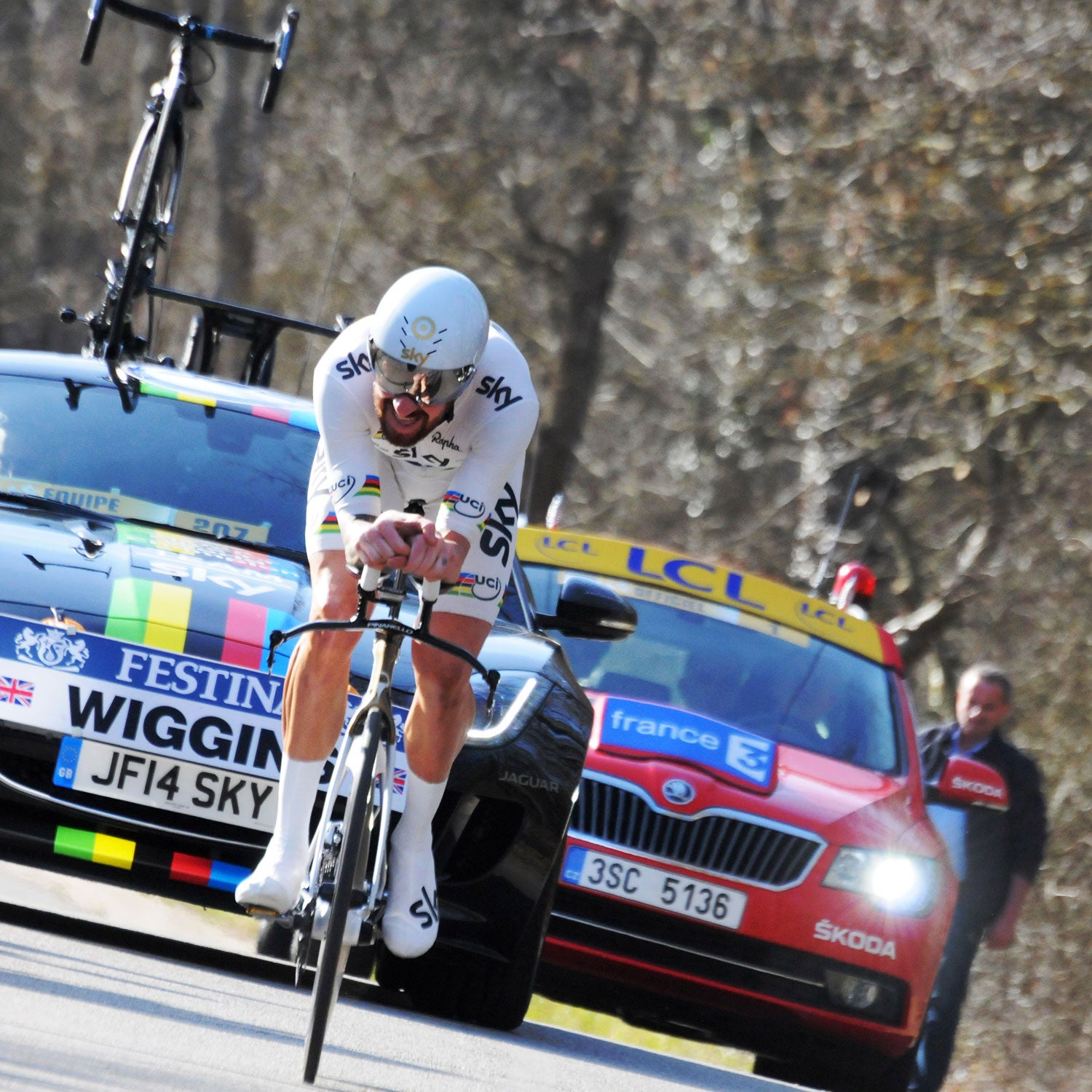Seven cyclists have attempted to break the hour record since September 2014, but each of them is just a hors d’oeuvres before the main course: Great Britain’s Bradley Wiggins.��
Of the trio of modern time-trial kings (which also includes Fabian Cancellara and Tony Martin), Wiggins is the first to commit to the hour record, which measures how far a cyclist can ride in 60 minutes. He’s slated to try and break the record next month, at the in London, England, and his time will likely place the bar high for Martin and Cancellara.��
Last year, cycling’s international governing body, the , revived interest in the hour record by passing new rules allowing for aero gear. In June 2014, the distance to beat was Eddy Merckx’s 1972 record of 49.431 kilometers. Now it’s 52.937 kilometers, a record .������
Chances are good it will fall again June 7. Wiggins, who’s won four Olympic and six World Championships gold medals, is no stranger to track racing or time trialing—the two key ingredients to a successful hour record.��
But since 2008, he’s been focused on road racing, . And that sort of riding requires an entirely different skill set than the hour record.
A rider transitioning from road racing to riding 60 perfect minutes on the track is a bit like a tennis player moving from the clay courts in the French open to the lightning-fast grass courts at Wimbledon. It’s possible to excel at both, but only for the greats. And it’s not a given.��
“You have to understand that getting ready for the hour record is nothing like getting ready for the Tour de France,” says Voigt. “The workouts are much shorter, more intense. What I was doing for the hour record was closer to what a prologue specialist might do when they are preparing for the short time trial. In the morning we did an hour and a half maximum on the track, but it was very, very intense.”
For the last two months after retiring from road racing, Wiggins has had to totally revamp his training. Gone are the long rides so important to riding a 260-kilometer classic like . Intensity is the new premium.
He’ll focus his workouts on maintaining the predetermined average speed needed to break the record. In this case, that’ll be around 53.5 kilometers per hour, which would give him a reasonable margin of error over Dowsett’s current record. The tricky part: Wiggins will effectively race the course blind, as the UCI forbids the use of a computer to track speed.��
So how does he hit that benchmark with no data? By focusing on the details.��
First, Wiggins will have to define the best gearing and pedal cadence. He’ll need to choose the biggest gear possible that won’t wear him down after 60 minutes.��
Second, he’ll run test runs in various temperatures to see how they affect aerodynamics. “The heat is something we worked on a lot during the Tour de France preparation,” says , Wiggins’ long-time trainer at team Sky.��“Optimum aerodynamics inside a velodrome is actually quite hot, where there is the least amount of drag, the least amount of air resistance.��[But] you have to find a balance between what’s optimal from an aerodynamic point of view and what’s tolerable for the athlete.”
Then there’s altitude. While some world hour record attempts and training runs have been done at altitude because of the lower pressures and thus better aerodynamics, the Wiggins team opted not to pursue that option. “When you go to altitude there is definitely lower air pressure, but in our experience, you lose about 10% of your power when racing at altitude,” says Kerrigan. “The aerodynamic gain is not worth the physiological cost.”������
Ultimately, it’ll all come down to pacing, Sky team manager says. “Be it in swimming, in marathon running or in time trialing, the art of pacing takes years and years and years to master and I think that is one of the things that Bradley has mastered over the years.”��
Riders typically break the 60 minutes into segments that allow them to maintain focus, and within each segment they can vary their intensity to some degree, although they are limited by the choice of gearing. Dowsett, for example, chose to start out slow and actually posted a negative split.��
Voigt broke into three 20-minute segments. Understanding that he was ahead of pace in the first 20 minutes, he backed off in the middle segment before making a all-out push in the end.
His advice to Wiggins? “Be brave,” says Voigt. “Know your limits, but don’t be afraid to go there. I played it too safe. I backed off in the middle a bit, because I was concerned that I might fade in the end. But I had too much energy in the last 15 minutes. Don’t be afraid to pedal hard!”


